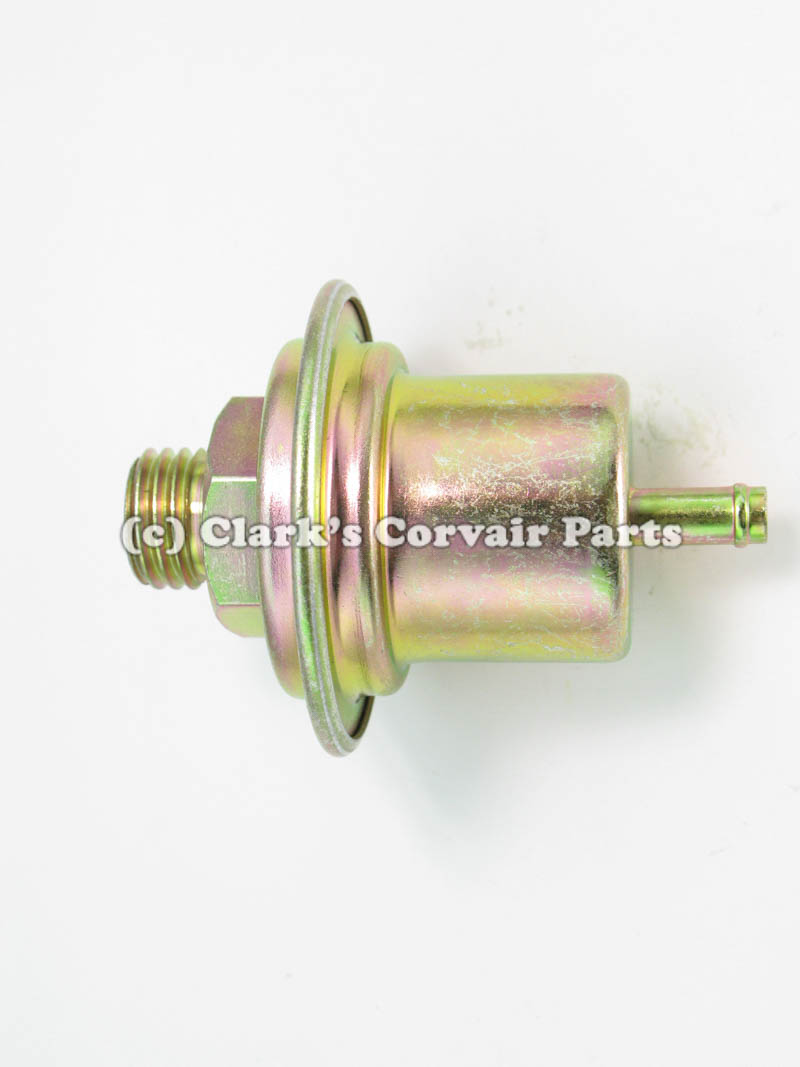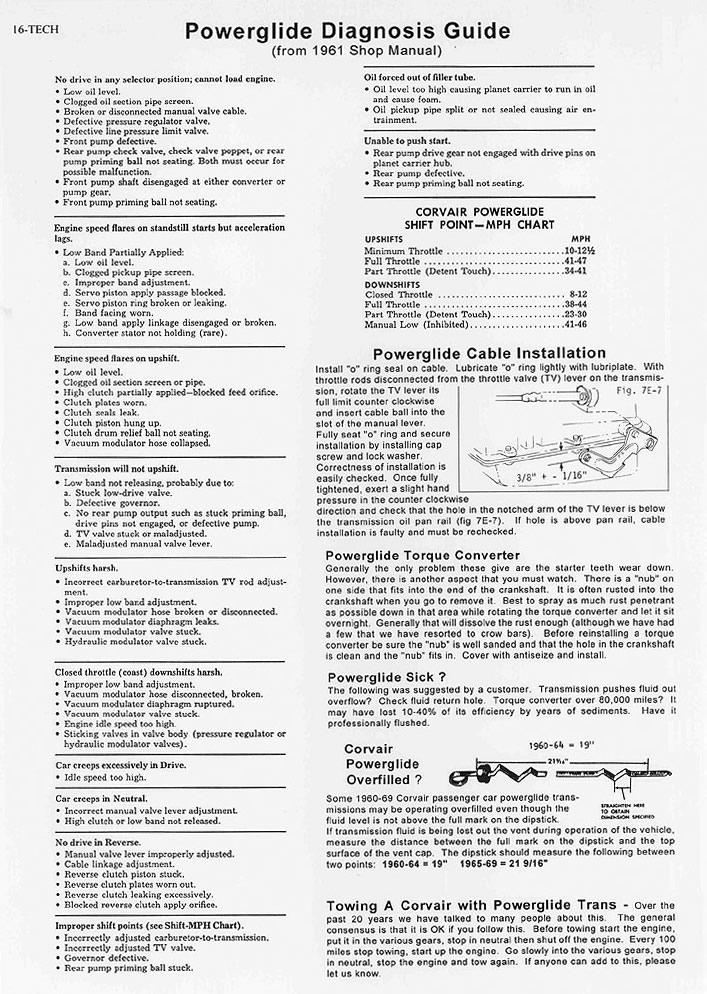Hi everyone I am sure this has been asked before but my search did not reveal anything for me........
I have been cleaning the top of my engine so I noticed this after going for a drive...... There was a little puddle of oil just below the vacuum balance tube on the right side of the engine, and it seems to have run out of the tube or the carb base......unfortunately I did not do the sniff test to determine exactly what type of fluid it was......so I was wondering what places the vacuum balance tube is connected to.
Can it suck oil from anywhere or should I assume my. Modulator valve has decided to start leaking trany fluid through the diagram ? If memory serves the skinny rubber line about the middle,of the balance tube goes,to the modulator valve......where does the fat ruber line go to..... Crank case maybe?
I guess a probable upside to this is that the rubber connector at the base of the carb is probably leaking so I may have identified a vacuum leak too :)
Thanks
Bob
Vacuum circuit
Vacuum circuit
Bob
66 Monza 2dr Converible, Automatic, (95 HP)
Marina blue, White Top, Black and White Interior
65 CORSA turbo - being restored
66 Monza 2dr Converible, Automatic, (95 HP)
Marina blue, White Top, Black and White Interior
65 CORSA turbo - being restored
- bbodie52
- Corvair of the Month

- Posts: 11937
- Joined: Mon Aug 06, 2012 12:33 pm
- Location: Lake Chatuge Hayesville, NC
- Contact:
Re: Vacuum circuit
The two sources of oil that might feed into the vacuum balance tube might include the PCV (Positive Crankcase Ventilation) system, possibly feeding oil from the crankcase via the fixed vacuum orifice. The other might be the Powerglide transmission vacuum modulator.
Oil would not normally be drawn through the PCV tube, as it is used to relieve crankcase pressure buildup created by piston ring blowby. However, the crankcase is a sealed area with limited places for pressure to go (if it is excessive). There is a baffle plate between the engine top cover and the engine cases to prevent oil from getting into the PCV system. I suppose it might be possible to have some oil work its way into the PCV tube and possibly collect and drain from the vacuum hose at the base of the carburetor (check the condition of the rubber balance tube connector hose — it might be cracked or split from heat and age).
The Powerglide transmission is like a fluid-based computer. Cooling, control and switching/shifting, as well as lubrication and fluid coupling between the engine and the transmission is all done by the transmission fluid. The condition of the fluid AND THE FLUID LEVEL are critical. An overfilled transmission is very bad, in that the rotating planetary gear set spins in a bath of fluid, which can cause air entrainment, or foaming of the transmission fluid. Low fluid levels can result in poor cooling and shift control and slipping/burning bands and clutches. A leak can quickly translate into internal damage that is much-more difficult and costly to repair than the leak itself would have been.
Clark's indicates that the vacuum modulator on the side of the transmission has a limited operational life of about 10 years or so. They cannot be repaired, so if you discover transmission fluid in the vacuum hose that connects your Powerglide transmission to the engine, replacement of the vacuum modulator is likely indicated.


Part number C876: PG MODULATOR VALVE GASKET-C877 HOSE-C3358 WRENCH=C5294
Weight: 0 lbs 8 oz
Catalog Pages(s): 135(59)
Price:
1 - 1 $ 25.10
2+ $ 23.10
Brad Bodie
Lake Chatuge, North Carolina
 1966 Corvair Corsa Convertible
1966 Corvair Corsa Convertible
Lake Chatuge, North Carolina
 1966 Corvair Corsa Convertible
1966 Corvair Corsa ConvertibleRe: Vacuum circuit
Thanks for the vacuum circuit picture, very informative...... I really do suspect the modulator valve so I have already ordered one even if it is not the problem, it can't hurt to replace or have a spare:)
As I said the only way the oil could have got to,where I found it was the rubber coupler, so I ordered a couple of those to..... When my parts arrive I I'll pull the vacuum tube to replace the rubber couplers and I will see if I can see exactly which fluid is getting in there.
Regards Bob
As I said the only way the oil could have got to,where I found it was the rubber coupler, so I ordered a couple of those to..... When my parts arrive I I'll pull the vacuum tube to replace the rubber couplers and I will see if I can see exactly which fluid is getting in there.
Regards Bob
Bob
66 Monza 2dr Converible, Automatic, (95 HP)
Marina blue, White Top, Black and White Interior
65 CORSA turbo - being restored
66 Monza 2dr Converible, Automatic, (95 HP)
Marina blue, White Top, Black and White Interior
65 CORSA turbo - being restored
Re: Vacuum circuit
Hi again guys had the car running today and had a chance to check the trany fluid level....... Nothing was really hot but the fluid was just showing on the dip-stick nub........so regardless of temperature...... I am guessing it is low.
I am convinced the modulator valve is leaking since there don't seem to be any leaks around the transmission and the fluid I found coming from the vacuum crossover tube...
So the question is what fluid do I put in this power glide...... Last time I did it" I just had to pick the dexron off the shelf....it was current :).
Thanks
Bob
I am convinced the modulator valve is leaking since there don't seem to be any leaks around the transmission and the fluid I found coming from the vacuum crossover tube...
So the question is what fluid do I put in this power glide...... Last time I did it" I just had to pick the dexron off the shelf....it was current :).
Thanks
Bob
Bob
66 Monza 2dr Converible, Automatic, (95 HP)
Marina blue, White Top, Black and White Interior
65 CORSA turbo - being restored
66 Monza 2dr Converible, Automatic, (95 HP)
Marina blue, White Top, Black and White Interior
65 CORSA turbo - being restored
- bbodie52
- Corvair of the Month

- Posts: 11937
- Joined: Mon Aug 06, 2012 12:33 pm
- Location: Lake Chatuge Hayesville, NC
- Contact:
Re: Vacuum circuit
Maintaining the proper fluid level in the Corvair automatic transmission is critical to its operation and longevity. Fluid levels should be checked regularly, and any detected loss of fluid should be investigated to correct the cause. Also, be sure to avoid over-filling, as this can cause rotating internal transmission components to be partially immersed in oil and can cause oil foaming (air entrainment), which can also be damaging to an automatic transmission.

Valvoline DEXRON® VI ATF
Designed to meet the specific requirements of GM transmissions
Officially licensed and GM approved
Provides consistent shift performance for new and old GM transmissions
Outstanding sludge resistance provides superior transmission life
Provides excellent oxidative stability under severe conditions to keep your transmission shifting smoother longer
For all General Motors cars and trucks that require DEXRON®-VI, DEXRON®-III and DEXRON®-II
DEXRON Automatic Transmission Fluid is appropriate for use in Powerglide transmissions. There have been variations in the fluid over the years, with the current designation being DEXRON VI. The changes in the fluid are discussed at the following website...
 http://en.wikipedia.org/wiki/DEXRON
http://en.wikipedia.org/wiki/DEXRON
The following Clark's Corvair Parts Tech page discusses several issues with Powerglide transmission in Corvairs, including the proper length of the transmission fluid dipstick...
 http://www.corvair.com/user-cgi/catalog ... ge=TECH-16
http://www.corvair.com/user-cgi/catalog ... ge=TECH-16


Valvoline DEXRON® VI ATF
Designed to meet the specific requirements of GM transmissions
Officially licensed and GM approved
Provides consistent shift performance for new and old GM transmissions
Outstanding sludge resistance provides superior transmission life
Provides excellent oxidative stability under severe conditions to keep your transmission shifting smoother longer
For all General Motors cars and trucks that require DEXRON®-VI, DEXRON®-III and DEXRON®-II
DEXRON Automatic Transmission Fluid is appropriate for use in Powerglide transmissions. There have been variations in the fluid over the years, with the current designation being DEXRON VI. The changes in the fluid are discussed at the following website...
The following Clark's Corvair Parts Tech page discusses several issues with Powerglide transmission in Corvairs, including the proper length of the transmission fluid dipstick...

- Attachments
-
- 1965 Corvair Chassis Shop Manual - SECTION 0 - GENERAL INFORMATION AND LUBRICATION.pdf
- 1965 Corvair Chassis Shop Manual - SECTION 0 - GENERAL INFORMATION AND LUBRICATION
- (2.94 MiB) Downloaded 21 times
Brad Bodie
Lake Chatuge, North Carolina
 1966 Corvair Corsa Convertible
1966 Corvair Corsa Convertible
Lake Chatuge, North Carolina
 1966 Corvair Corsa Convertible
1966 Corvair Corsa ConvertibleRe: Vacuum circuit
Thanks Brad
You always provide lots of detail....... Much appreciated.
I will pick some up tomorrow, so it is topped up before it goes to,sleep for a few months.....
Thanks again
Bob
You always provide lots of detail....... Much appreciated.
I will pick some up tomorrow, so it is topped up before it goes to,sleep for a few months.....
Thanks again
Bob
Bob
66 Monza 2dr Converible, Automatic, (95 HP)
Marina blue, White Top, Black and White Interior
65 CORSA turbo - being restored
66 Monza 2dr Converible, Automatic, (95 HP)
Marina blue, White Top, Black and White Interior
65 CORSA turbo - being restored